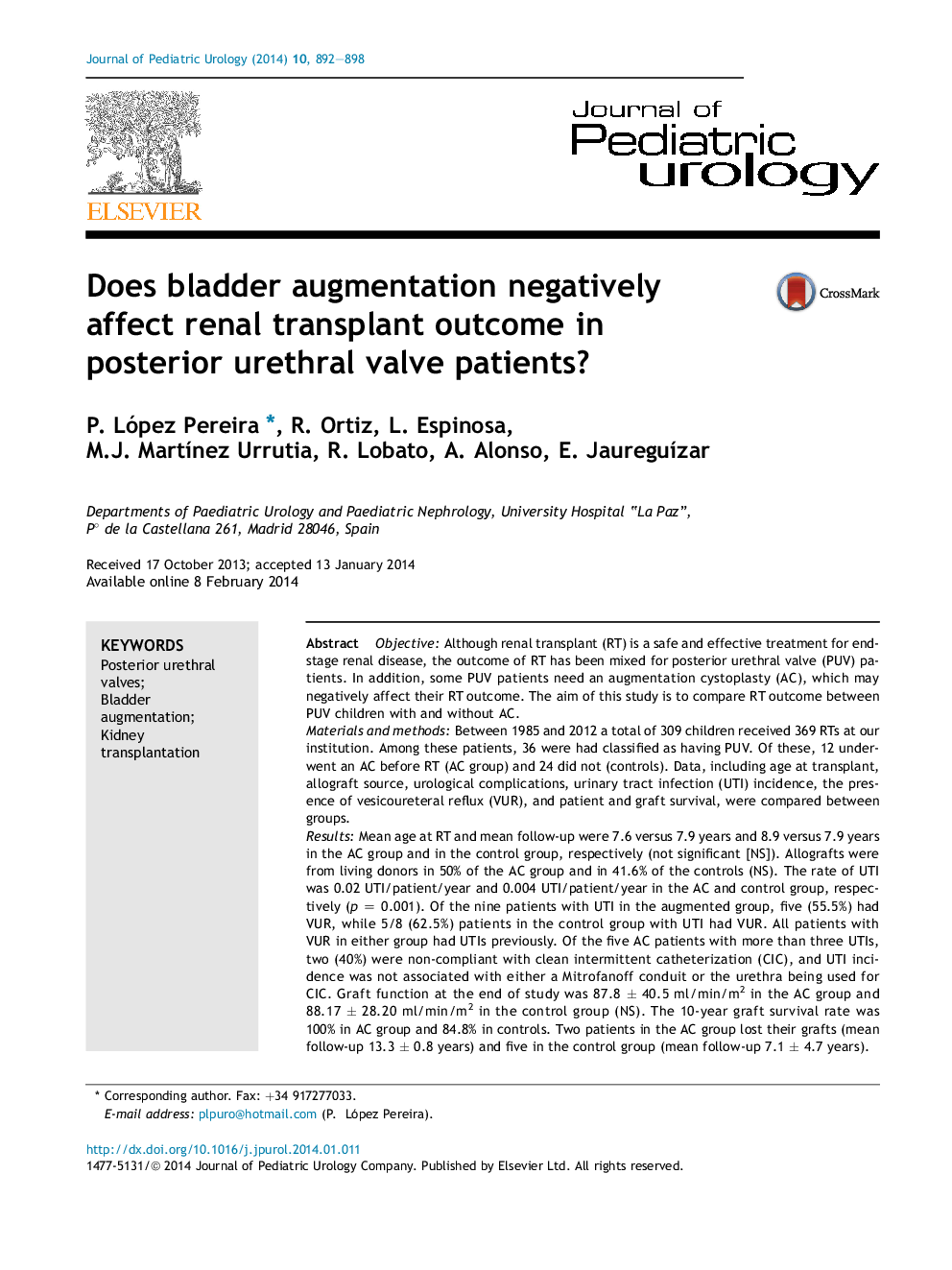| کد مقاله | کد نشریه | سال انتشار | مقاله انگلیسی | نسخه تمام متن |
|---|---|---|---|---|
| 4162363 | 1274277 | 2014 | 6 صفحه PDF | دانلود رایگان |
ObjectiveAlthough renal transplant (RT) is a safe and effective treatment for end-stage renal disease, the outcome of RT has been mixed for posterior urethral valve (PUV) patients. In addition, some PUV patients need an augmentation cystoplasty (AC), which may negatively affect their RT outcome. The aim of this study is to compare RT outcome between PUV children with and without AC.Materials and methodsBetween 1985 and 2012 a total of 309 children received 369 RTs at our institution. Among these patients, 36 were had classified as having PUV. Of these, 12 underwent an AC before RT (AC group) and 24 did not (controls). Data, including age at transplant, allograft source, urological complications, urinary tract infection (UTI) incidence, the presence of vesicoureteral reflux (VUR), and patient and graft survival, were compared between groups.ResultsMean age at RT and mean follow-up were 7.6 versus 7.9 years and 8.9 versus 7.9 years in the AC group and in the control group, respectively (not significant [NS]). Allografts were from living donors in 50% of the AC group and in 41.6% of the controls (NS). The rate of UTI was 0.02 UTI/patient/year and 0.004 UTI/patient/year in the AC and control group, respectively (p = 0.001). Of the nine patients with UTI in the augmented group, five (55.5%) had VUR, while 5/8 (62.5%) patients in the control group with UTI had VUR. All patients with VUR in either group had UTIs previously. Of the five AC patients with more than three UTIs, two (40%) were non-compliant with clean intermittent catheterization (CIC), and UTI incidence was not associated with either a Mitrofanoff conduit or the urethra being used for CIC. Graft function at the end of study was 87.8 ± 40.5 ml/min/m2 in the AC group and 88.17 ± 28.20 ml/min/m2 in the control group (NS). The 10-year graft survival rate was 100% in AC group and 84.8% in controls. Two patients in the AC group lost their grafts (mean follow-up 13.3 ± 0.8 years) and five in the control group (mean follow-up 7.1 ± 4.7 years).ConclusionsBladder augmentation does not negatively affect renal outcome in PUV patients undergoing transplantation. However, recurrent UTIs are more frequent in transplanted PUV patients with an AC than in those without AC, and they are generally related to non-compliance with CIC or the presence of VUR but, mostly, they will not result in impaired graft function.
Journal: Journal of Pediatric Urology - Volume 10, Issue 5, October 2014, Pages 892–897
